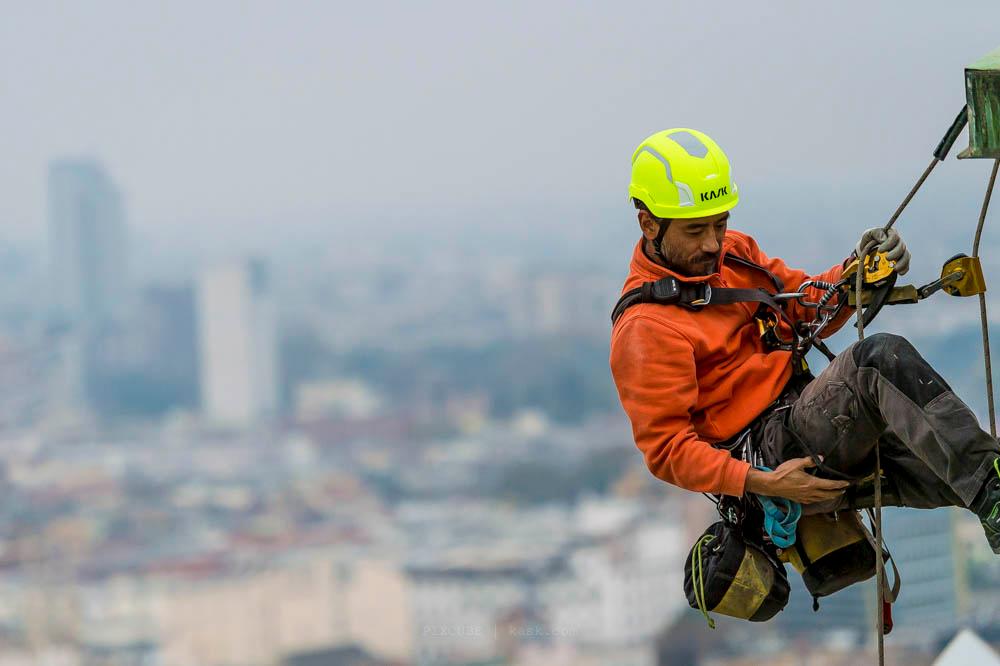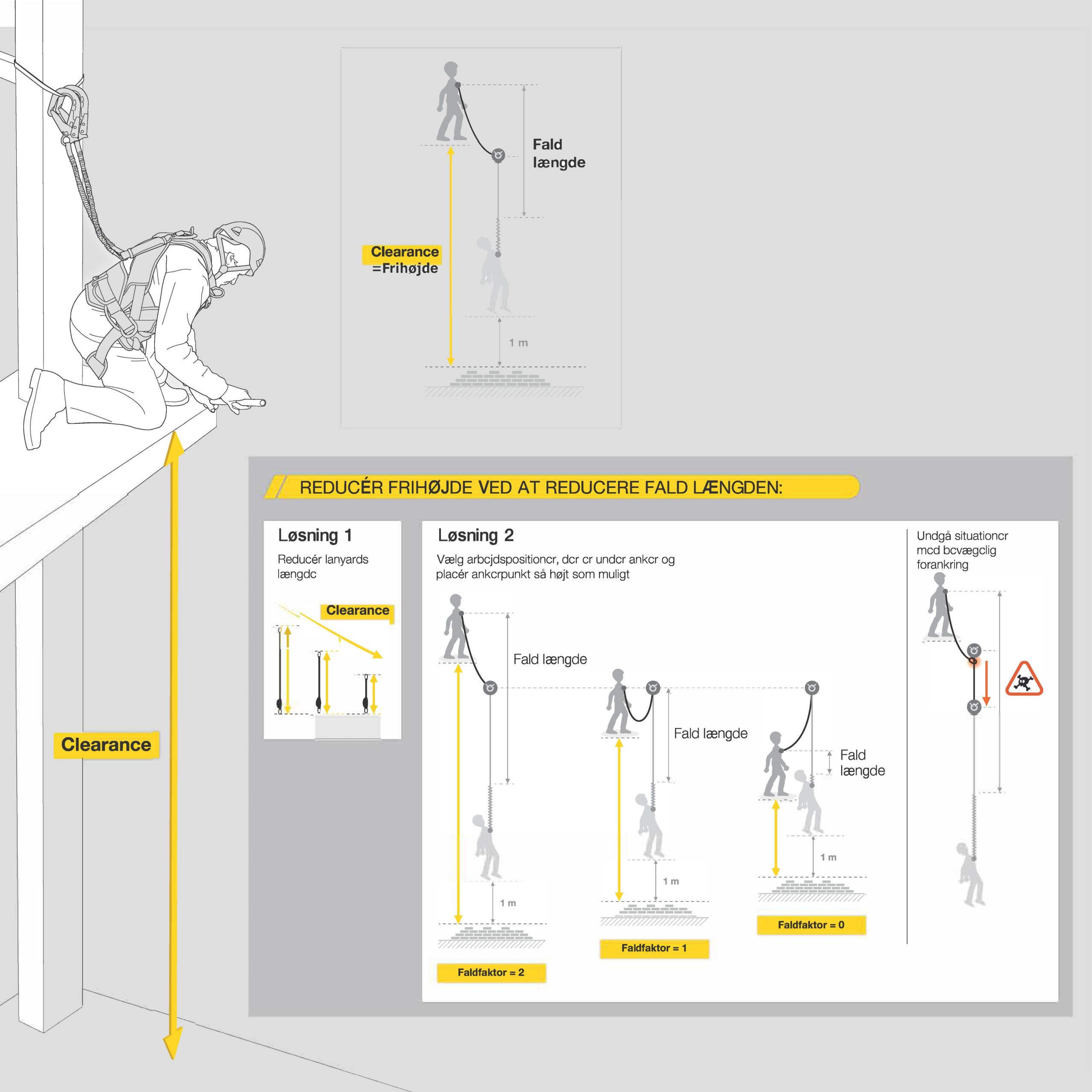What is fall factor? And why is it important?
Published: 12/06-2023 | Readtime: 1m 1s
When working at height, it is important to carefully consider the height of the location of the user's attachment point to the personal fall protection system in relation to the anchor point; this determines the "fall factor", which gives an indication of the length and severity of a potential fall.

The fall factor is calculated by taking the distance of the free fall and dividing it by the length of the lanyard available to stop it. In a normal working situation, the maximum fall factor is 2.
The fall factor must always be kept as small as possible, i.e. the length of any fall must be minimized, e.g. by choosing an anchor point above the user and the lanyard length should be kept as short as possible.
As illustrated below, an anchor point above the user provides the least fall factor, so is the safest and preferred option; a shoulder level anchor point provides a greater fall factor and should only be used as a second choice; an anchor point at foot height provides the maximum fall factor and, although acceptable, should always be the last option.
Example for 2-meter lanyard:
A. Anchor point above user (preferred option):
- Free fall distance: 0.5 m (F)
- Fall factor = 0,5/2 =0,25
B. Anchor point at shoulder level (non-preferred option):
- Free fall distance: 2m (F)
- Fall factor = 2/2 =1
C. Anchor point at foot height (only if there is no other option):
- Free fall distance: 4m (F)
- Fall factor = 4/2 =2

